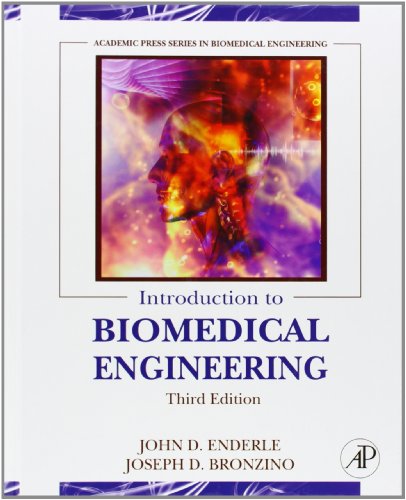
Read Introduction to Biomedical Engineering, Third Edition book online now. You also can download other books, magazine and also comics. Get online Introduction to Biomedical Engineering, Third Edition today. Are you Looking Download or read Introduction to Biomedical Engineering, Third Edition for free..? enjoy it.
Introduction to Biomedical Engineering is a comprehensive survey text for biomedical engineering courses. It is the most widely adopted text across the BME course spectrum, valued by instructors and students alike for its authority, clarity and encyclopedic coverage in a single volume.
Biomedical engineers need to understand the wide range of topics that are covered in this text, including basic mathematical modeling; anatomy and physiology; electrical engineering, signal processing and instrumentation; biomechanics; biomaterials science and tissue engineering; and medical and engineering ethics.
Enderle and Bronzino tackle these core topics at a level appropriate for senior undergraduate students and graduate students who are majoring in BME, or studying it as a combined course with a related engineering, biology or life science, or medical/pre-medical course.
- NEW: Each chapter in the 3rd Edition is revised and updated, with new chapters and materials on compartmental analysis, biochemical engineering, transport phenomena, physiological modeling and tissue engineering. Chapters on peripheral topics have been removed and made avaialblw online, including optics and computational cell biology
- NEW: many new worked examples within chapters
- NEW: more end of chapter exercises, homework problems
- NEW: image files from the text available in PowerPoint format for adopting instructors
- Readers benefit from the experience and expertise of two of the most internationally renowned BME educators
- Instructors benefit from a comprehensive teaching package including a fully worked solutions manual
- A complete introduction and survey of BME
- NEW: new chapters on compartmental analysis, biochemical engineering, and biomedical transport phenomena
- NEW: revised and updated chapters throughout the book feature current research and developments in, for example biomaterials, tissue engineering, biosensors, physiological modeling, and biosignal processing
- NEW: more worked examples and end of chapter exercises
- NEW: image files from the text available in PowerPoint format for adopting instructors
- As with prior editions, this third edition provides a historical look at the major developments across biomedical domains and covers the fundamental principles underlying biomedical engineering analysis, modeling, and design
- Bonus chapters on the web include: Rehabilitation Engineering and Assistive Technology, Genomics and Bioinformatics, and Computational Cell Biology and Complexity
The purpose of the third edition remains the same as the first and second editions, that is, to serve as an introduction to and overview of the field of biomedical engineering. Many chapters have undergone major revision from the previous editions with new end-of-chapter problems added. Some chapters were eliminated completely, with several new chapters added to reflect changes in the field.
Over the past fifty years, as the discipline of biomedical engineering has evolved, it has become clear that it is a diverse, seemingly all-encompassing field that includes such areas as bioelectric phenomena, bioinformatics, biomaterials, biomechanics, bioinstrumentation, biosensors, biosignal processing, biotechnology, computational biology and complexity, genomics, medical imaging, optics and lasers, radiation imaging, tissue engineering, and moral and ethical issues. Although it is not possible to cover all of the biomedical engineering domains in this textbook, we have made an effort to focus on most of the major fields of activity in which biomedical engineers are engaged.
The text is written primarily for engineering students who have completed differential equations and a basic course in statics. Students in their sophomore year or junior year should be adequately prepared for this textbook. Students in the biological sciences, including those in the fields of medicine and nursing can also read and understand this material if they have the appropriate mathematical background.
 Read some sample pages on "Materials in Medicine: From Prosthetics to Regeneration" from Introduction to Biomedical Engineering. [PDF] |
